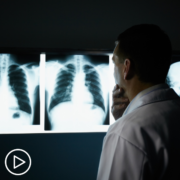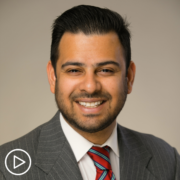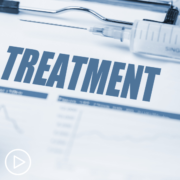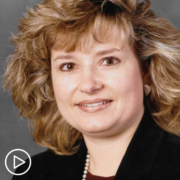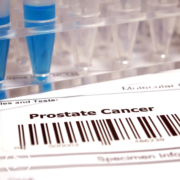How Is Lung Cancer Treated? from Patient Empowerment Network on Vimeo.
Lung cancer expert Dr. Jyoti Patel provides an overview of lung cancer treatment approaches, including radiation therapies, targeted therapies, immunotherapy, chemotherapy, and surgery.
Jyoti Patel, MD, is Medical Director of Thoracic Oncology and Assistant Director for Clinical Research at the Robert H. Lurie Comprehensive Cancer Center of Northwestern University. She is also Associate Vice-Chair for Clinical Research and a Professor in the Division of Hematology and Oncology at Northwestern University Feinberg School of Medicine. Dr. Patel is a leader in thoracic oncology, focusing her efforts on the development and evaluation of novel molecular markers and therapeutics in patients battling non-small cell lung cancer. Learn more about Dr. Patel.
See More from Thrive Lung Cancer
Related Resources:
Transcript:
Katherine:
I’d like to walk through the types of treatments that are used today to treat lung cancer. Let’s start with surgery.
Dr. Patel:
We think about local therapies as things like surgery. So, surgery has evolved, again, significantly.
Now with videoscopic approaches and robotic approaches we’re able to remove a tumor either with a larger incision – more traditional incision – or some of the smaller incisions. And the goal of doing the surgery is often to want to diagnosis the cancer. So, to do a biopsy. But when it’s used in terms of cancer treatment, the goal of surgery is to get a complete resection.
So, we only do surgery if we can remove a tumor and mass with clear margins and not compromise other vital functions. Sometimes we’ll, again, do a more palliative surgery if we need to, if there’s a problem that’s causing significant symptoms. But in that case, the surgery is generally not improving the survival of the patient. It’s trying to palliate symptoms.
Katherine:
Mm-hmm. What about other types of therapy?
Dr. Patel:
Other localized therapies predominately include radiation therapy. And, again, radiation has significantly changed over the past years. We’ve been able to incorporate new technologies, truly target tumors, and to minimize toxicity, with two kinds of radiation. Photon therapy, which is more traditional therapy, and proton therapy, which we see administered in a very small subset of patients.
Primarily, photon therapy, we treat tumors, sometimes over many weeks, to decrease toxicity versus sometimes we give one or two doses of radiation in a high-dose fashion that’s very targeted. So, often for the chest in stage III cancer, for example, a patient may end up getting six weeks of radiation Monday to Friday with chemotherapy.
And that, again, is curative intent. It’s to ablate the cancer and to provide the best local treatment.
Often, we’ll do something called stereotactic radiation therapy. And that is if there is a discreet mass, often that could be if the cancer is metastasized to the brain, we can give very targeted radiation there, again, to ablate the tumor.
In patients who may not be candidates for surgery because lung surgery is a big deal, right? Removing part of your lung can lead to morbidity in someone with other medical issues. Sometimes we can use pinpoint radiation in the lung and see really good outcomes for patients with good disease control.
Katherine:
You’re also using chemotherapy still, I would imagine?
Dr. Patel:
The other part of treatment for lung cancer are systemic therapies. And there a number of systemic therapies. So, I sort of break it down into three major parts. One is chemotherapy. Chemotherapy remains a backbone of treatment for lung cancer.
It’s a lot more tolerable and much more personalized than ever before. Often chemotherapy can be given to patients without significant toxicities. Not everyone loses their hair. Not everyone has neuropathy. Often, I have patients who are working and taking care of their families on chemotherapy. So, it is a good and very reasonable option. But two things that we’re really most excited about – and I think have changed the field most dramatically – are targeted therapies and immunotherapies.
Katherine:
Mm-hmm.
Dr. Patel:
These targeted therapies are rationally designed molecules or antibodies that block proteins that may be overexpressed in lung cancer.
So, some of them are the byproducts of mutated genes that are upregulated and causing a cancer to grow. Others may just be that we’re seeing a high level of protein expression on the cancer cell. But these targeted therapies preferentially bind to their targets that are present on cancer cells and not so much normal cells. Because of this, often there is less toxicity to normal cells. But because we can find specific targets – and the best targets are ones that are only expressed on cancer cells.
But because we can find a direct target, sometimes we’re able to design drugs that may have significant efficacy. So, 80 percent or 90 percent of people who have a particular target and are able to get a targeted therapy may have a response to treatment. Targeted therapy can be great for some patients. And patients may be on oral medications, sometimes for years, to control their cancer.
The other real game-changer in the past decade for lung cancer has been the integration of immunotherapy. Approved immunotherapies currently are primarily antibodies that we give to patients. And these antibodies block proteins that are expressed by cancer cells which downregulate the immune system. By shutting down these proteins, your own immune system is able to kind of re-see the cancer cell and kill it.
And so, now we know in patients with more advanced disease that immunotherapy or immunotherapy with chemotherapy leads to better outcomes than we’ve ever seen. We also use immunotherapy for patients with stage III lung cancer after chemotherapy and radiation. And this improves their survival significantly.
And most recently, we’ve now integrated immunotherapy after surgery for patients with early-staged disease to decrease their chance of relapse from cancer.
Katherine:
So, are there options for relapsed patients?
Dr. Patel:
So, absolutely. Most of our therapies in the metastatic setting work for some time. And then cancer is a difficult adversary. It figures out how to overcome whatever strategy we’re using and becomes resistant. When that happens, often we need to change course. We need to try a new therapy. We have a number of therapies that we’re looking at in the first- and second-line settings. And we’re trying to understand best therapies for subsequent lines of treatment.
Generally, I say treatment is appropriate if you’re feeling pretty well, right? If you’re able to tolerate treatment, then the likelihood that you would be able to benefit from therapy is significant. How that changes over time weighs heavily on our decision. So, if someone’s having more fatigue or more symptoms from their cancer, it may be that even a little bit of toxicity proves too much.
Whereas if someone is feeling still really good, we may be willing to say, okay, I’m going to take a little bit more of a risk for the benefit of improved cancer control.






